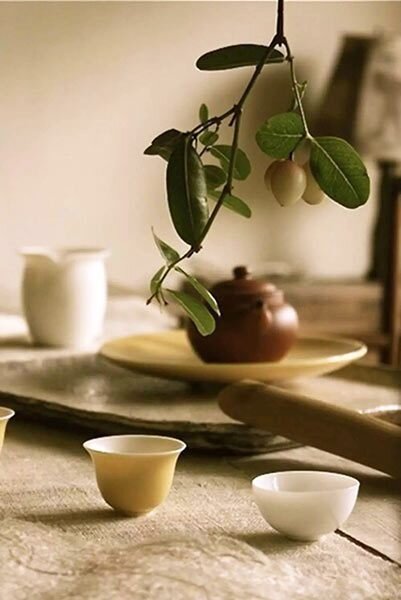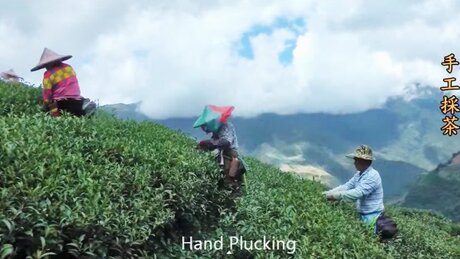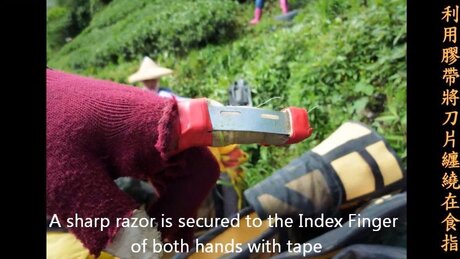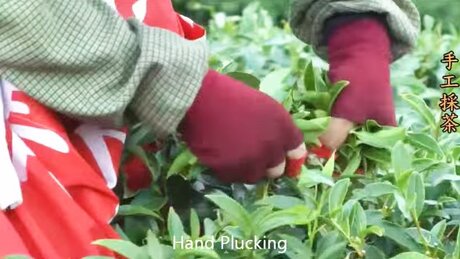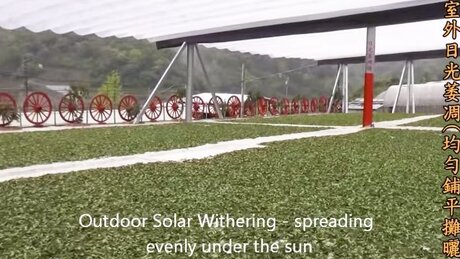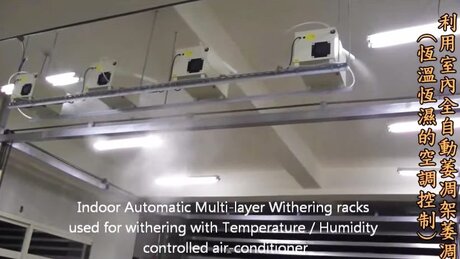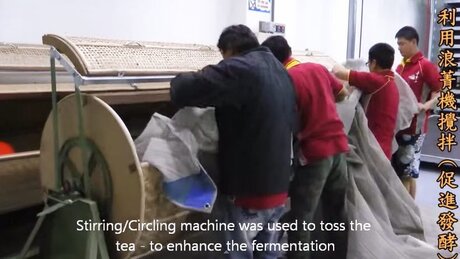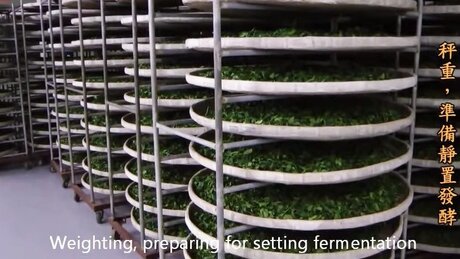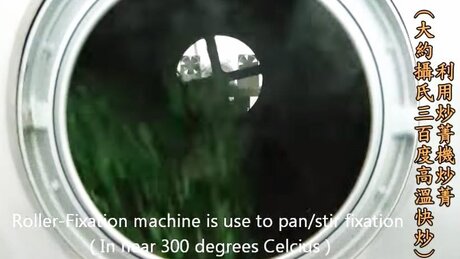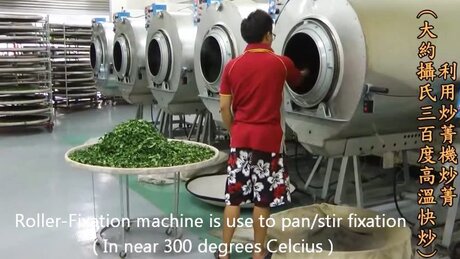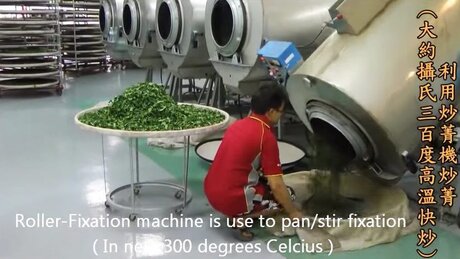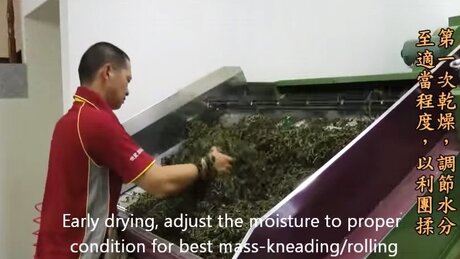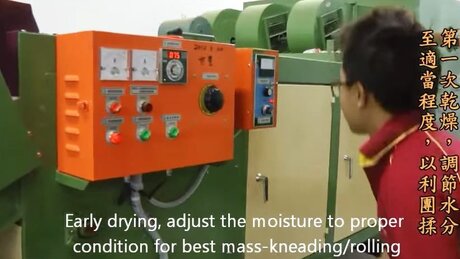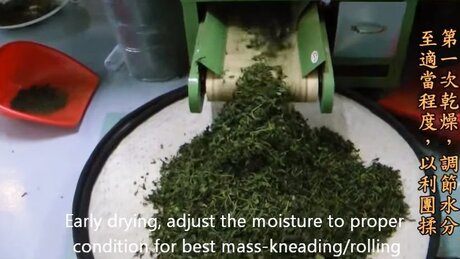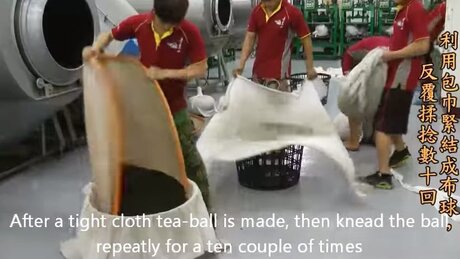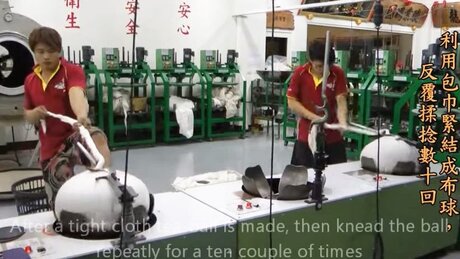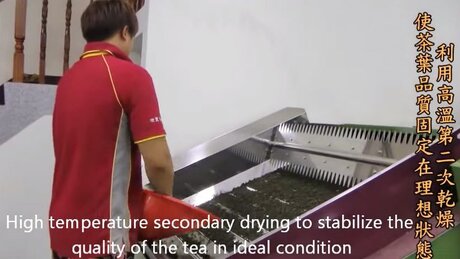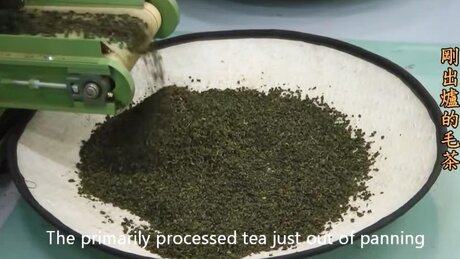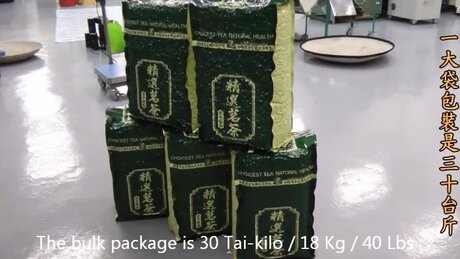The youngest of oolongs is Taiwanese. Its beginning was quite ordinary. While most teas boast their own legends, the story of Taiwan oolong is real.
In times of Qing dynasty (since year 1725, let me remind that they were Manchu conquerors) some part of Fujian tea makers has moved to the island of Taiwan neighboring to their province. Although wild tea plants could be encountered on the island, tea makers have prudently decided to bring along own plants and tea production technology with them.
Initially they were producing only jasmine flavored green tea. This may also be due to the fact that native Taiwanese were not used to oolongs, or perhaps favorite teas could not be produced on Taiwan due to the completely different soils, which altered the flavor of the leaf as well. Nevertheless after some time they started to produce oolongs. Tea trade became a profitable business and tea gardens begun to appear in place of bamboo thickets, former fruit gardens and other farmsteads. It was discovered that higher grooving elevation made oolong more fragrant and tender. Little by little tea plantations started to crawl higher and higher up the mountains and reached 2500 meter altitudes, unconceivable for the continental China.
Although Taiwan oolong was processed using Wuyi oolong or Tieguanyin production technology, they altered significantly by rich fruity flavor and other unique sensory features. Which thereby has distinguished it into completely new type with its own quality criteria. Taiwan was more open to trade with foreigners and in 18 century were established active supplies of oolong in America and Europe. With the expansion of communism in China the tea industry on the continent fell into decline. Taiwan made a breakthrough on the world tea market becoming a heir of the great Chinese tea history. By the way residents of Taiwan always considered that bad revolutionaries had occupied their country while they on the island are the last outpost of Chinese nation and guardians of all traditional values.
In that times the tea has been so far roasted hardly and its principal flavor was formed by this roasting process. Taiwanese turned out to be the biggest fans of their own tea. They were holding endless tea contests to find out whose tea is better and to boast it before each other and the customers. These contests started featuring less and less roasted tea. As soon as brewing of slightly processed tea unveils the natural flavor of the leaf and enables to determine the raw stock of the best quality instead of the roasting mastership. With the growing demand of such slightly processed tea the age of slightly roasted oolongs has begun. Modern developments, such as refrigeration and transportation by air, have resolved the problem of preserving splendid flavor of «green» oolongs.
Currently the Taiwan tea market offers both strongly and slightly roasted oolongs. However slightly roasted oolongs outnumber significantly. There are oolongs with ribbon-shaped tea leaves — the legacy of Wuyi craftsmen. Still it’s oolongs curled in the South Fujian manner that Taiwan became renown for. Therefore our description of Taiwan oolong production covers the most common type.
There are 4 seasonal crops. Each tea has its advantages, still autumn and spring gathers are the best.
Afterwards the tea is placed on bamboo trays for sap fermentation on the leaf edges broken by tossing.
The machine performs multiple processes. The tea is both roasted and separated into individual leaves after roliing.
It is time to shape tea leaves. This procedure consists of several repeated stages. A tea leaf can not be curled into a ball shape in one go.
Second roasting and separation of tea leaves. Gradually round by round the tea leaves turn into tight dry balls.
Packaged into different-sized bags. Big ones are for wholesale dealers, smaller ones — for retailers.
Same brewing procedure as for Tieguanyin as both the plant and the production technology originate from South Fujian. The tea is brewed in boiling water at the rate of 7 grams per 100 ml and may be prepared traditionally in fast steepings. However there is a special ceremonial brewing of rolled oolongs. As Chinese web-sites describe it: 1/3 of the vessel should be is filled with the tea. First steeping rinses tea leaves. Second — infuses for 30 seconds increasing the time of infusion with every consecutive steeping. This enables to acquire rich and vibrant brew right away. Lasts 5–7 steepings.
Ceramics and porcelain fit well for brewing. However ceremonies often use round shaped Yixing teapots made of zhuni clay. You may well say it’s an ideal tea-ware for brewing Tieguanyin.
When brewing all oolongs first steeping is discarded to let the tea leaves better unfold and wash out dust of the broken leaf.
Strongly roasted tea can be easily stored for several years in tightly sealed tea canister or vacuum package. Storage of slightly roasted oolongs is more complicated. They also retain palatability for years but their flavor changes. Yet certain «freshness», which is so valued, vanishes in a course of time. Therefore to delay its aging packaged tea is better to be stored in a refrigerator.
Illustrated by screenshots from film 2013 Spring Tea Harvest and Processing.

